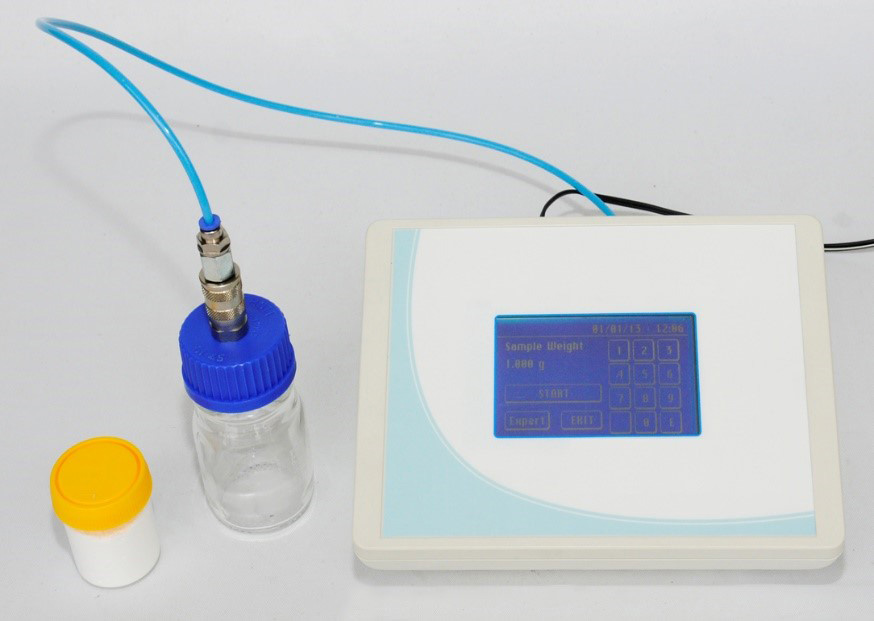Background
Many special tests are run on rock samples to make on-the-spot determination of specific minerals. These tests vary from applying such standard chemicals as alizarin red for calcite detection to calcimetery for quantitative determination of carbonate content. Generally, the calcimetery test relies on the reaction of calcium carbonate with hydrochloric acid (HCl) for determining the amount of CaCO3 (calcite) and CaMg (CO3) 2 (dolomite) in alkaline carbonate samples such as oil well cores or drill cuttings.
Using the automatic calcimeter developed by Energy Researchers Ariana (ERA) Company, the powdered core/cutting samples containing carbonate matrix are reacted with 1 Normal HCl in a sealed reaction cell to release CO 2 . A calibration curve determined by a pure calcium carbonate reagent is used to relate CO 2 pressure to the weight of the calcium carbonate in the sample automatically.

Application
- Quantification of the carbonate calcium minerals (calcite and dolomite) during drilling
Benefits
- Automatic recording of pressure readings and elapsed time internally and on USB flas
- Automatic calcite and dolomite percentage reporting
- Equipped by a data communication port for integration to the computer
